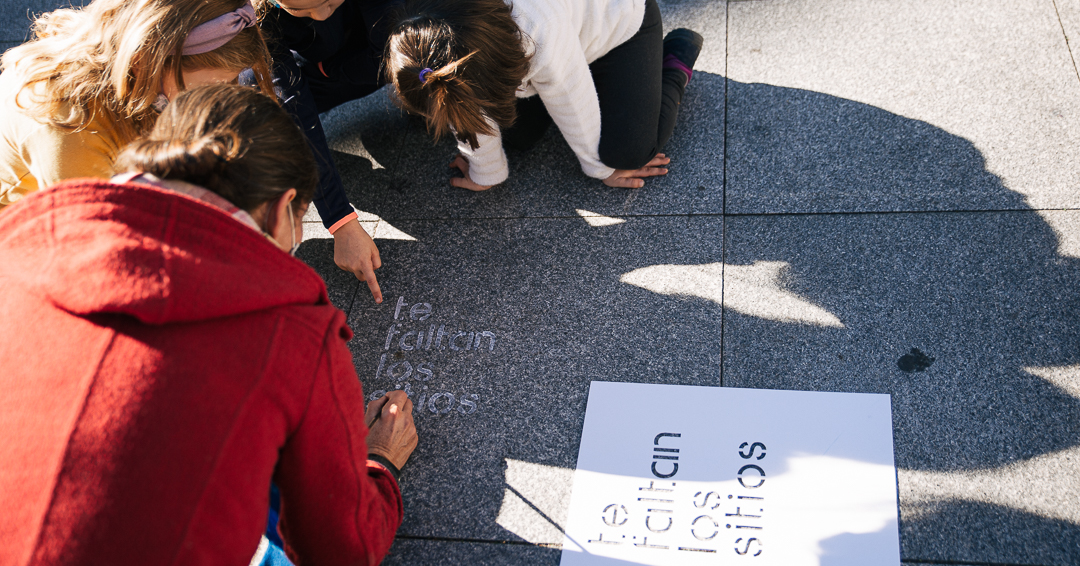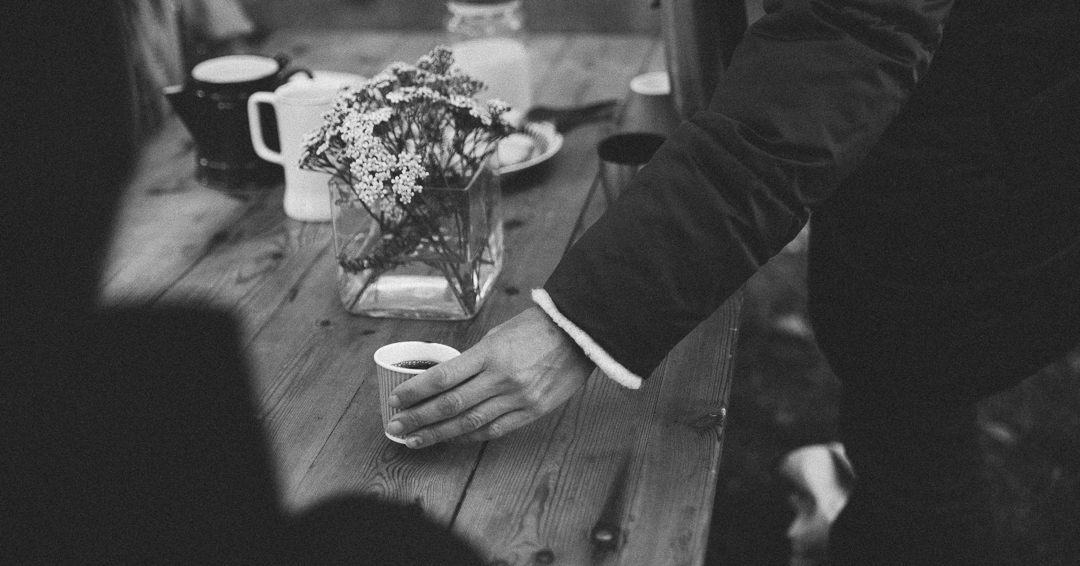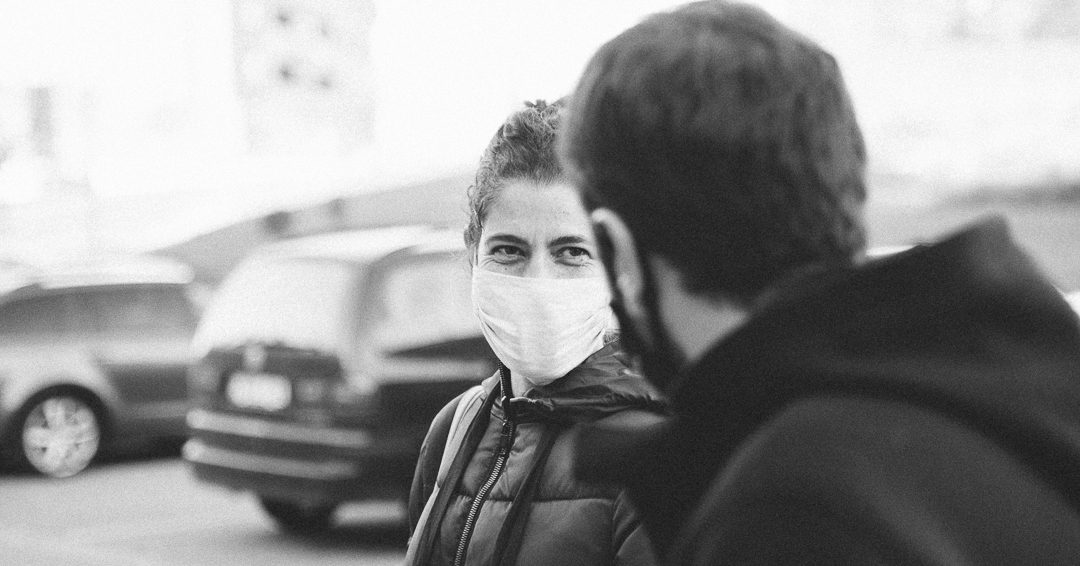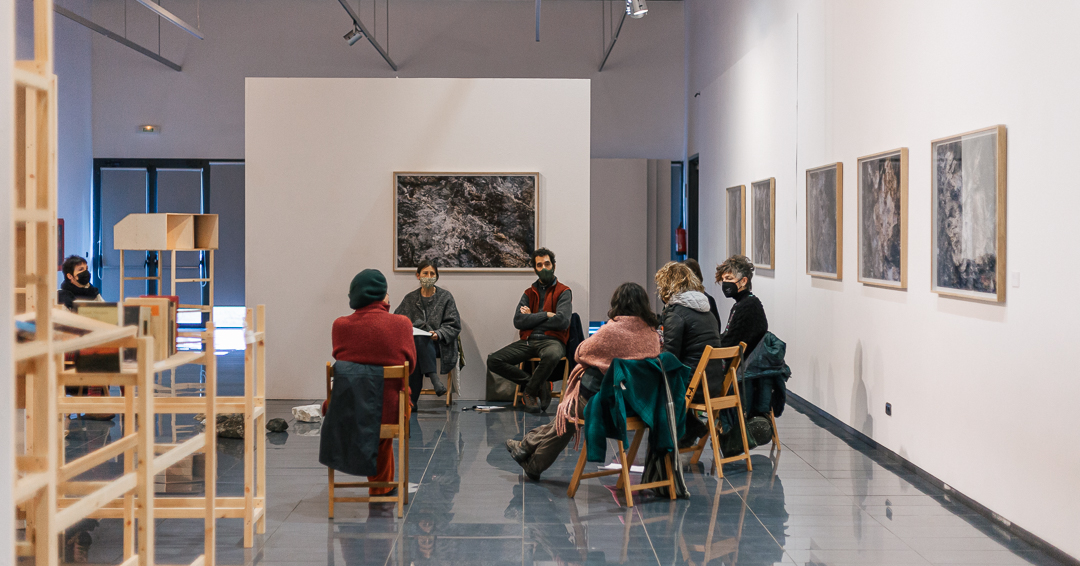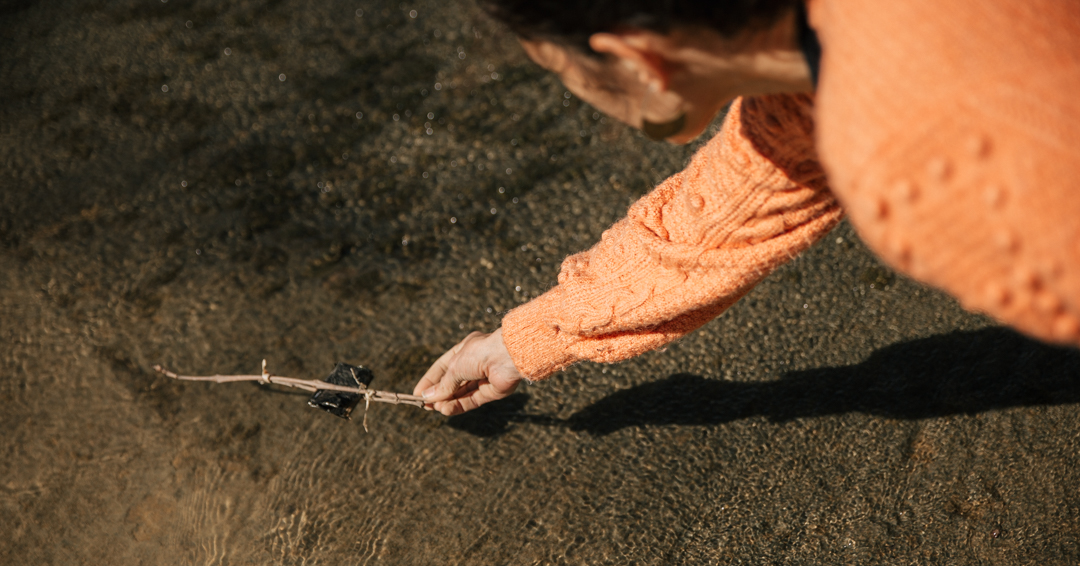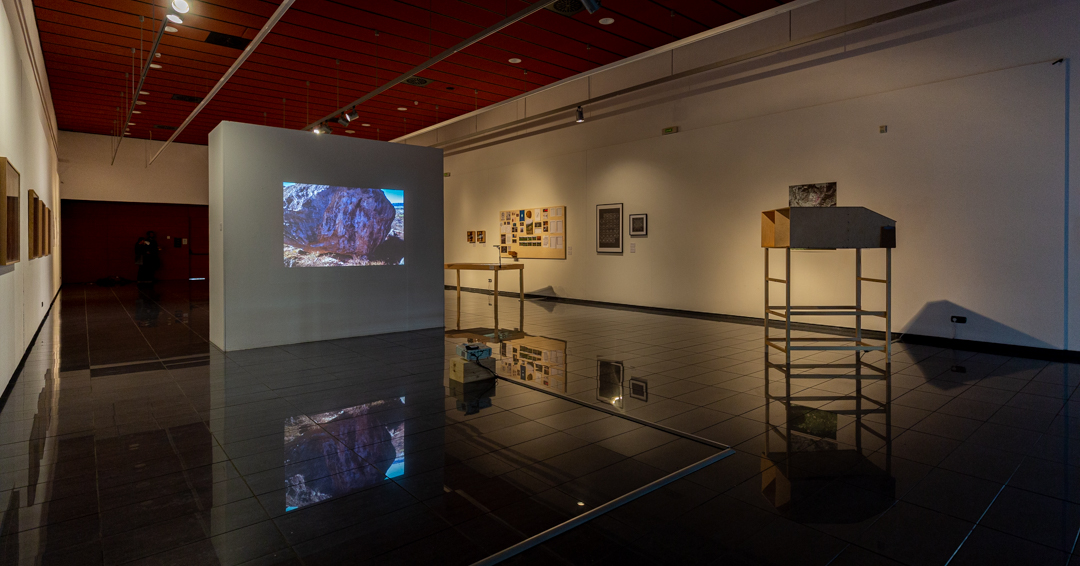Programa expositivo Uholdeak
Basic information
Project Title
Full project title
Category
Project Description
Uholdeak program makes the artistic processes visible, seeking to overflow the conventional art production space, decentralizing contemporary culture and offering an approach to the population located on the periphery of the art circuits. The actions proposed are directly related to the current debates on art and rurality, bringing contemporary art processes closer to the rural community and, reciprocally, valuing the knowledge and knowledge of the places in which the program is developed.
Project Region
EU Programme or fund
Description of the project
Summary
The Uholdeak program makes the artistic processes visible beyond Centro Huarte, seeking to overflow the production space itself, decentralizing contemporary culture and offering an approach to the population located on the periphery of the conventional circuits. Its central action is a collective exhibition that annually visits different Navarran towns and villages situated outside of the main urban area of Pamplona, as a result of a curatorial investigation by a local agent who works on the chosen theme and concludes in a collective exhibition in which local contemporary artists participate.
An educational and mediation program activities accompanies the curatorial proposal, which in addition to materializing in a traveling exhibition as well as a live proposal in each locality, will include a program of annexed activities aimed at both mediation, and education, as well as a publication that will collect the content created. In addition, the Huarte Center provides another virtual tool, Tresnaka, which combines an archive of artists and an educational resource, very appropriate for the current situation due to pandemics social restrictions. Taking into account the multiple knowledge that a territory constantly generates, either individually or collectively, these actions are articulated as strategies with which to value that knowledge and capacities, commiting on the cooperative as a tool of creation.
The participating venues in the two editions developed until today have been: The Aoiz House of Culture, the Alsasua Iortia Cultural Center, the Tafalla House of Culture and the Casa del Almirante de Tudela Cultural Center. Also, in the last edition, the Arizkunenea cultural center of the Baztán Valley in Elizondo joined. In the next edition, we plan to invite the same network to participate and get involved in its development as well as in the mediation and education programs that have been contemplated.
Key objectives for sustainability
Uholdeak objectives in terms of sustainability are met by two complementary aspects:
On the one hand, Uholdeak project is linked to the transformation process of Centro Huarte in recent years, becoming a center for experimentation, production and artistic research around contemporary art and culture as well as the reference space for contemporary art in the Community of Navarra. The activity of the center has been characterized by a clear vocation to transform the dynamics of work with the local artistic community, in such a way that production is not understood only as the creation of works, but also as the generation of knowledge, relationships, affects, with programming formats that are governed by sustainability, flexibility, and collaboration. Throughout this, collaborations with both public and private bodies have been essential, making Uholdeak program an example of this process, taking into account our natural environment, social and territorial challenges. Within this framework, promotion and dissemination of contemporary art has been promoted throughout the Navarrese territory, betting on local artists beyond the space of production and contributing to return to the public the approaches of contemporary art.
On the other hand, sustainability is considered as one of the main objectives addressed by the Uholdeak program itself: Make contemporary artistic practices accessible to the entire Navarrese territory, working collaboratively and specifically with each of the venues, connected with local and rural areas. Its curatorial proposals are therefore directly related to reality and current debates on social context of rural areas, reinforced by the mediation and educational activities programme, in a way that affect the territories where they take place and promote sustainable relations with each of them.
Key objectives for aesthetics and quality
The actions proposed understand this approach of contemporary art to people's daily lives as a tool for social change since it generates immaterial benefits: the development of a critical sense, an approach to a form of broader knowledge, the democratization of knowledge, a rethinking of relationships and affects, and ultimately, a better understanding of our reality, our context and our ways of living. The program seeks an approach to the conceptual universe of the artists participating in Uholdeak by people outside the art world, who in many cases are unaware or unfamiliar with the languages of contemporary art.
Taking into account the multiple knowledge that a territory constantly generates, either individually or collectively, the proposed actions are articulated as strategies with which to value those knowledge and capacities, commiting on the cooperative as a tool of creation.The mediation program will be finalized in parallel to the curatorial proposal. In this sense, we count with the collaboration of other social agents and collectives as well as public libraries for the design of a joint program that relates their activity to the contents of the exhibition. In addition, in each locality this program will be adapted generating actions or programs in situ seeking to bring communities together and develop a shared sense of ownership of the shared space.
Uholdeak will be carried out respecting the principles of gender equality and inclusiveness, both when it comes to having the artists represented, and based on the content addressed, sometimes also working and reflecting on issues around gender. The interests and concerns of Jone Rubio, the guest curator in the next edition of Uholdeak, are directly related to this issue. She will continue researching this time on the relationship of feminist collective memory in relation to the territory. Thus, the artworks are understood as containers of the experiences of the creators in dialogue with their environment.
Key objectives for inclusion
Uholdeak contemplates an education and mediation program in order to assure inclusion of the groups and social collectives that Uholdeak intends to reach. The activities proposed within this program are fundamental to achieve one of the main objectives of Uholdeak: the accessibility of contemporary artistic practices in Navarre. This educational program is thought in parallel to the development of the project, serving as a link between the exhibition proposal and the general public.
Uholdeak program appears in the Strategic Plan for the Culture of Navarra 2017-2023 as a commitment to: Create a network of complicit spaces of the reference centers of Navarra with other cultural centers located throughout the Autonomous Community, with the aim that they act as "antennas" of these reference centers, and allow the expansion of creation initiatives , production, research, exhibition, etc. and its impact on the entire territory and for all citizens (Code E1.L2.A2) (General de Cultura del Gobierno de Navarra, 2017).
For all these reasons, the Uholdeak program favors mediation between the different agents of the territory. Designed to travel through various locations in the Navarra geography, different readings are proposed in each of these by establishing an active dialogue with the territories that host it.
In this way, it is possible to create a context sensitive to contemporary creative practices in different parts of the Navarrese geography, generating links both between cultural agents and between them and the public. In short, by decentralizing the cultural proposal and bringing it closer to other places, the scope of the social benefit of culture is broadened and accessibility to contemporary art is guaranteed by a greater number of people.
Results in relation to category
The social challenge that Uholdeak seeks to respond to is directly related to the current reality and debates on art and rurality, bringing contemporary art processes closer to the rural community and, reciprocally, valuing the knowledge and knowledge of the places in which the program is developed. Uholdeak thus incorporates new ways of making contemporary art and culture reach audiences, promoting their accessibility and understanding both as spaces for encounter, still scarce and necessary in the rural context.
In this sense, the impact on the territory is one of the features that make up the identity of this program, which explains its relevance within the community where it is registered as well as the interest for the audiences it is addressed to. This question also coincides with the intention of the recently approved Foral Law of Cultural Rights in Navarra, a pioneer in the country for recognizing the right to culture as a fundamental right within the territory where we are, and therefore assuming a change in time. to promote cultural policies that defend the value of culture as a common good, as well as projects that allow participation in cultural life as a pillar of the construction of a more equal and democratic society.
Following this line, the recipients contemplated for the program are very varied and range from the general public who can visit the exhibition to a local group with which to work on issues that concern them, passing through schools, the public specialized through, for example, the catalog, the family audience that can participate in the actions, etc. In this way, the program guarantees the approach and presence of contemporary art in people's daily lives, ensuring the benefit that culture represents as an engine of social change.
How Citizens benefit
The way citizens benefit from the program is achieved both directly, through the mediation and education program that involves local educational and social centers, and indirectly, thanks to a coordinated work with agents of the territory, as well as with the synergies that the project itself generates. In this sense, territorial equity is one of the issues that Uholdeak cares about, as it is a decentralized proposal that takes into account the idiosyncrasies of each of the four municipalities where it takes place. The proposal for an annual itinerant exhibition through these places responds to the priority of expanding the scope of contemporary art and reaching spaces that, due to their geographical location and / or material circumstances, would not have been able to consider a project of these characteristics. The local cultural centers that participate are invited based on their accessibility conditions to host a contemporary art exhibition, as well as because they are relevant population centers distributed throughout the Navarrese geography, with the aim of ensuring the participation and interest of its audiences.
The Uholdeak program also contributes to strengthening institutional collaboration in cultural matters. In this case, between local cultural centres of different municipalities in Navarra and Centro Huarte, as well as involving the Navarra Network of Theaters and Public Libraries Network, making possible the diffusion of contemporary art in this territory from the affectation of the proposal to the contexts in which it is developed. Uholdeak achieves a systemic and lasting impact in this aspect within the regional cultural context, as well as responding to the objectives set out by the New EU Bauhaus Program, a key collaborator to achieve the continuation of this project, diversifying the sources of financing of the program as well as contributing to the establishment of synergies between the private and public sectors.
Innovative character
Uholdeak program aims to make artistic processes visible beyond Centro Huarte and overflow the production space itself, decentralizing contemporary culture and offering an approach to the population located on the periphery of conventional circuits.
Uholdeak also involves the construction of a network of collaboration sustained over time between the Fundación Caja Navarra, Obra social “la Caixa”, the Centro Huarte, the network of theaters of Navarra, the network of public libraries of Navarra and various cultural spaces Navarre localities in the creation of a joint project for the dissemination of contemporary art and culture in Navarra. In this sense, the network is made up of agents that articulate different cultural projects in the provincial community, also open to communicating with new agents that can enrich it with their participation, helping to strengthen the regional cultural context through lasting and sustainable synergies that allow better coordination, effectiveness and impact of the actions developed.
The initiative, in turn, tries to promote curatorial research through work with the Navarrese artistic context. The fruit of this research materializes in a group exhibition, which will be accompanied by live actions, as well as a mediation and education program with schools and educational centers in each of the places where the project takes place. In this edition, the curatorial proposal is also linked to the curatorial research residency that Centro Huarte launches annually. Jone Rubio was the local resident selected by public call who developed her research last year and the one invited to curate this edition of Uholdeak. This decision contributes to promoting curatorial research in Navarra, creating a more solid and professionalized context for the artistic work of Navarrese creators, as well as providing development opportunities in this still minority professional field in the Navarrese cultural sector.

